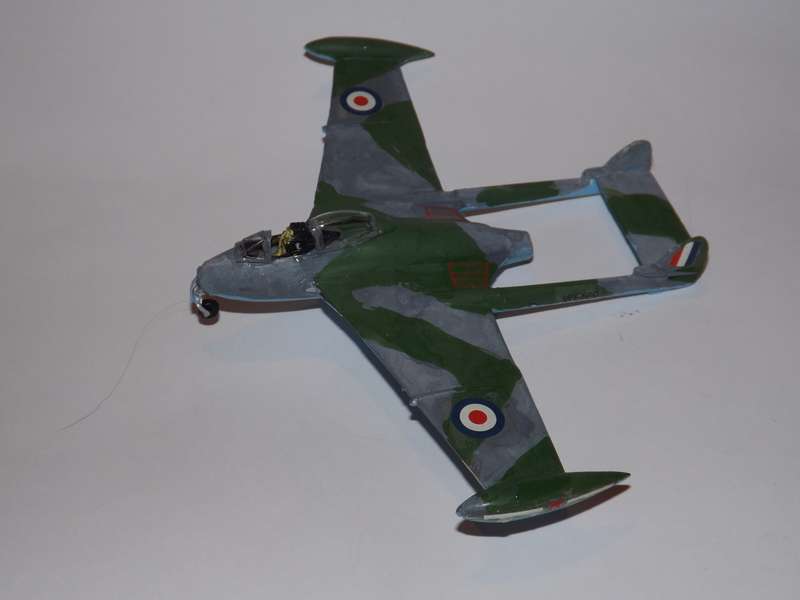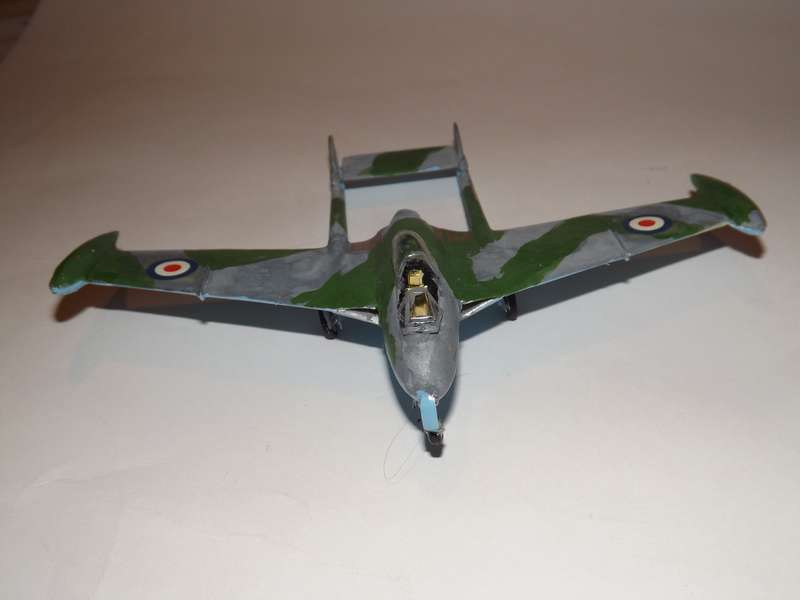Real Life Build - The De Havilland Venom FB.1, 45 Squadron, Butterworth, 1956.In 1948, de Havilland proposed a development of the Vampire, furnished with a thinner wing and a more powerful engine, to serve as a high altitude fighter, designated as the Vampire FB 8. The design gradually shifted, becoming the DH 112 Venom, in order to fill an Air Ministry requirement, Specification F.15/49, which sought a fast, manoeuvrable and capable fighter-bomber to replace the Royal Air Force's (RAF) existing Vampires in that capacity. From the onset, the envisioned role had been intended as an interim fighter-bomber, while the development of aircraft capable of even greater performance had already been anticipated by the service.
Although generally similar in appearance to the preceding Vampire, sharing the distinctive twin-boom tail and composite wood/metal structure, the Venom was a completely new design. As originally designed, it was powered by the de Havilland Ghost 103 turbojet engine, which was capable of generating 4,850lb of thrust, considerably more powerful than the earlier de Havilland Goblin that had been used on the Vampire. The Venom adopted a wing designed with a leading edge sweepback of 17.6 degrees, a minimised thickness/chord ratio reduced from 14 per cent to 10 per cent, while the trailing edge was straight; a pair of optionally-fitted wing tip tanks were also designed to be fitted without any negative impact on the aircraft's overall combat maneuvering capability.
The Venom FB 1 was powered by a single 4,850 lbf (21.6 kN) thrust Ghost 48 Mk.1 turbojet engine; later marks were equipped with increasingly powerful models. The engine was ignited using explosive cartridges, known as Coffman engine starters; at the time, many operators were not previously familiar with such means of start up. Early production models lacked ejection seats, which was subject to official criticism; in response, later production models were furnished with them. The airframe itself had a relatively short life due to having been designed for its role as a short term interim aircraft pending development of what would become the Hawker Hunter; in Swiss service, where the type was subject to a lengthy service life, several strengthening modifications were performed to more than double its viable lifespan. It was known for its simplicity in construction and relative cost-effectiveness, which contributed to its popularity to export customers.



 The Kit
The KitYes, this is a 1/72 scale kit. It is an ancient Aeroclub kit which I picked up from Evilbay a few years ago. It was small, simple and quite easily put together in a single evening. What was missing was room for adequate noseweights to stop it being a tail sitter. Thankfully, Aeroclub provided a metal ejection seat and I was able to put some lead foil and a largish metal nut far enough forward in the fuselage to make it sit on itís nose. It failed to arrive with a canopy so I purchase a Pavla Vampire one which looked the part. Painted in Vallejo Acrylic paints with a hairy stick.